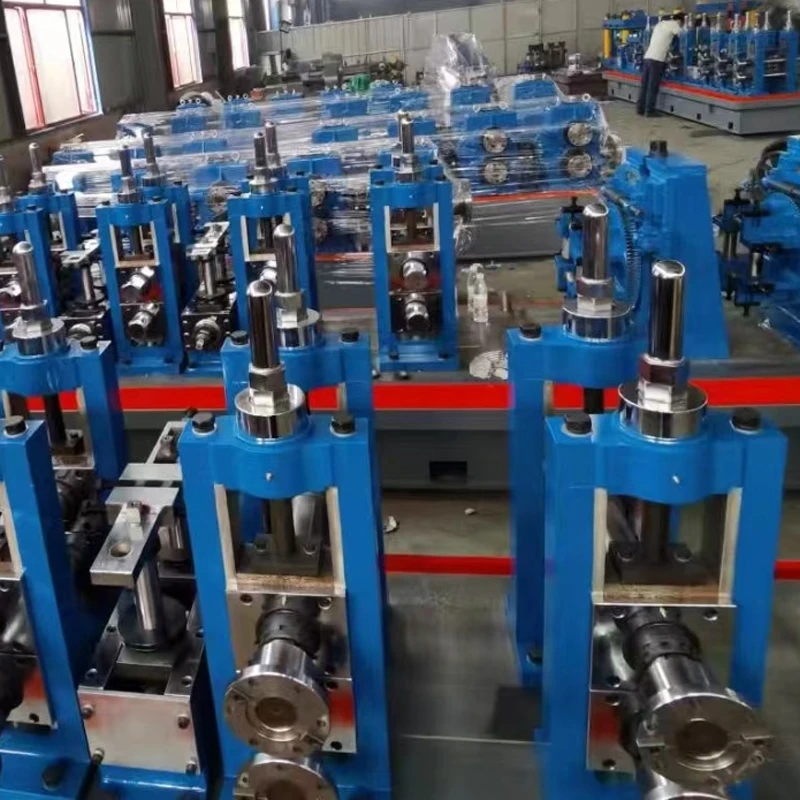Understanding the Roll Forming Process for Efficient Metal Fabrication Techniques
Understanding the Roll Forming Process
Roll forming is a streamlined manufacturing process that transforms flat metal sheets into long strips with specific cross-sectional profiles. This technique is widely used in various industries due to its efficiency, cost-effectiveness, and ability to produce high-quality components with precise dimensions. The roll forming process is particularly advantageous for producing parts in large quantities while maintaining high levels of consistency.
The Basics of Roll Forming
The roll forming process begins with a flat metal sheet, typically made from materials like steel, aluminum, or sometimes plastic. This material is fed into a series of rollers that progressively shape it into the desired profile. Each roller is strategically positioned to bend and shape the material as it passes through. The process involves several stages
1. Preparation The raw material is cut to the desired width before entering the roll forming line. It is essential to ensure that the material is clean and free from defects to maintain quality during the shaping process.
2. Roll Setup The rollers are designed to bend the material into specific shapes. Since roll forming can create a range of profiles, the number of rollers and their configurations are customized for each project.
3. Shaping As the metal moves through the rollers, it gradually takes on its new shape. This transition is continuous and allows for constant production without additional stops. The process can also incorporate a variety of features, such as flanges, holes, or notches, depending on the design requirements.
4. Cutting Once the desired profile is achieved, the continuous strip can be cut to length. This may happen using a saw or shearing machine, ensuring that the finished parts meet the specifications needed for assembly or further processing.
Advantages of Roll Forming
The roll forming process offers several benefits over other fabrication methods, making it a preferred choice for manufacturers
- Efficiency Roll forming is ideal for large-scale production. The continuous nature of the process allows for high throughput with minimal downtime.
roll forming process

- Material Utilization The process generates minimal waste, as the metal is formed rather than cut. This contributes to cost savings and is more environmentally friendly.
- Precision Roll forming produces components with tight tolerances and uniform shapes. This level of precision is essential for parts that require exact fitting in assemblies.
- Versatility The roll forming process can create a wide variety of shapes and profiles to suit different applications. This flexibility makes it an attractive option for industries ranging from automotive to construction.
Applications of Roll Forming
Roll forming is broadly used across different sectors. Typical applications include
- Construction Roll-formed metal studs, tracks, and roofing panels are essential components in building structures.
- Automotive Industry Components such as chassis parts, brackets, and interior trim pieces are often produced through roll forming due to their durability and light weight.
- HVAC Ductwork and supports are commonly made using roll forming, benefiting from its efficiency and strength.
Conclusion
The roll forming process stands out as a crucial manufacturing method that combines speed, efficiency, and precision. Its ability to produce a wide range of high-quality profiles makes it an indispensable tool in modern manufacturing. As industries continue to evolve and demand higher quality and lower production costs, roll forming is likely to remain a key player in the production of metal components.
-
Top Straightening Machine Supplier – High Precision Solutions for Metal ProcessingNewsJun.10,2025
-
High Efficiency Rotary Shear Machine for Precision Cutting Versatile Rotary Shear Shredder & Cordless OptionsNewsJun.10,2025
-
High-Precision Cold Rolled Steel Machine for Quality ProductionNewsJun.09,2025
-
Metal Tube Making Machine – High Precision & AutomationNewsJun.09,2025
-
Automated Lami Tube Manufacturing Machine High Output & PrecisionNewsJun.09,2025
-
Premium Roll Forging Machines High-Precision Metal Forming SolutionsNewsJun.09,2025


